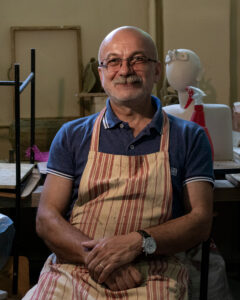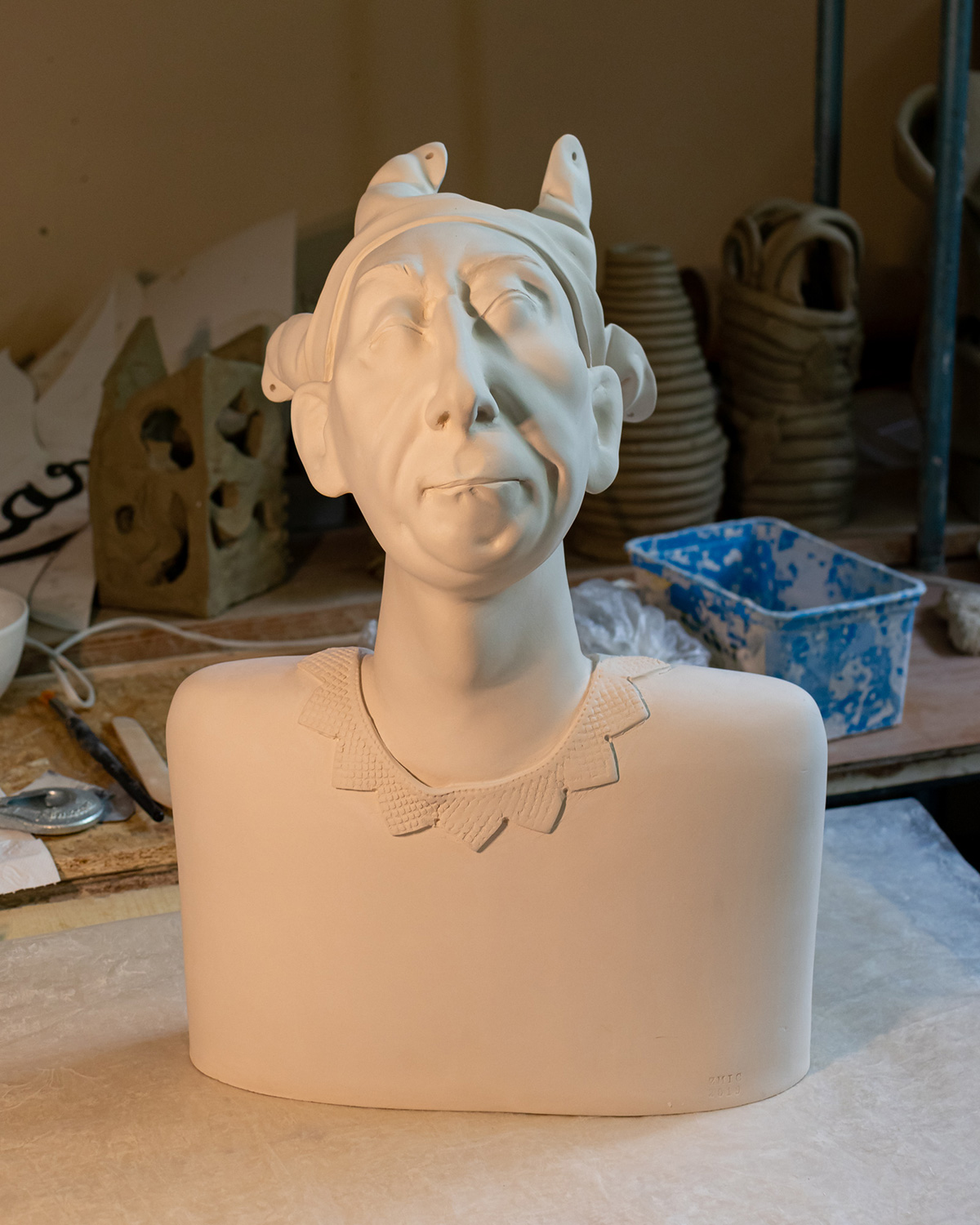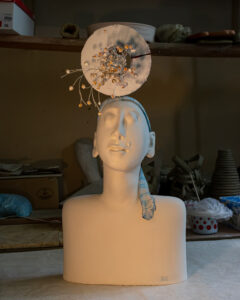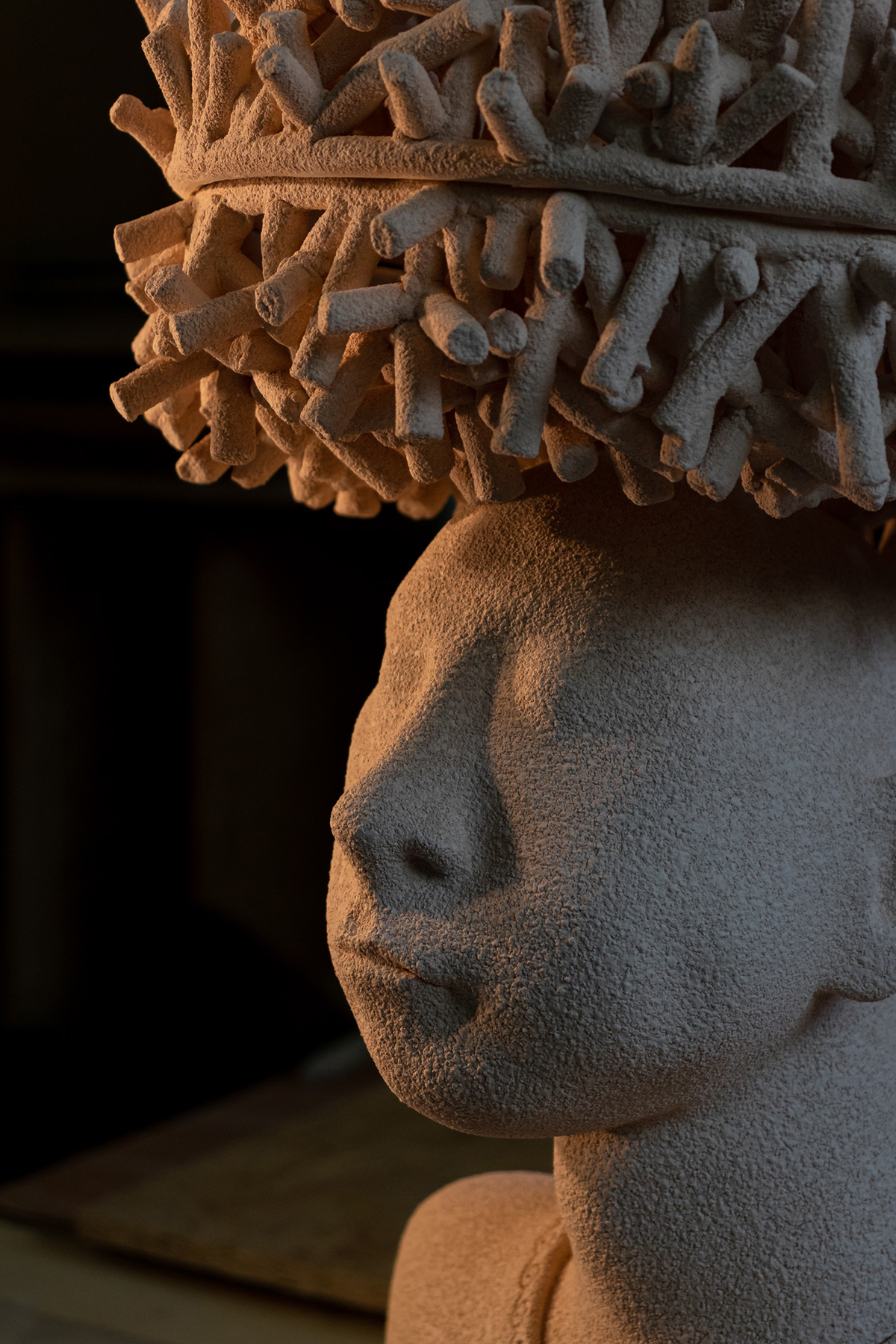
Gavril Zmicală is a reference name for Romanian artistic ceramics, with extensive experience also on the industrial front (at Iris and Sanex), and represents a link between different generations of ceramic artists from Cluj. For several years at the helm of the “Romul Ladea” High School of Visual Arts, Zmicală is a tireless teacher who knows how to be close to his students without the risk of losing his authority, with a rare pedagogical talent and a charisma often mentioned and certified by his former disciples.
The secret of this appeal to students, at a time when young people are becoming increasingly blasé, lies not only in the competence acquired after decades of exploration, but above all in Zmicală’s contagious passion for ceramics and its various possibilities of “understanding the living”, as he himself puts it.
For those who get to know him, Zmicală seems a kind of personification of the ceramic material, malleable and versatile at first, but intrinsically solid and definitive, resistant through firing.
Zmicală’s modeling skill, playfulness and conceptual clarity are impressive. His hand-crafted anthropomorphic busts and figurines reach a level of finesse that rivals the precision of industrial techniques and surpasses them in originality and refinement.
In spite of his duties as director and teacher, “Zmic” remains attached to the workshop and devotes part of his energy to promoting ceramic culture nationally and internationally.
When did you first think or set out to become a ceramist?
At the end of the High School of Fine Arts, in the 80s, when art education was on the verge of extinction, I had two options: graphic or ceramics. Having in high school a ceramics teacher with a very strong personality in the person of Mrs. Pop Eugenia, a very demanding and dedicated ceramics teacher, the choice became very simple for me. I already had experience in the construction of a negative, modeling and porcelain multiplication of a volume thanks to the practices coordinated by the teacher both in the Iris Factory and in the Sanex Factory.
Can you tell us about what it was like and how you felt when you participated for the first time in a ceramics exhibition?
Before and after 1989, for a few years, exhibiting in the premises of the Union of Fine Artists was a privilege, sometimes requiring many years of preparation. The first participation was with my former teacher, at the Union of Fine Artists Gallery in Deva, in a dialog between the drawing-project and the ceramic object. It was the first experience that led to the articulation of exhibition projects with my mentor.

What do you like to be called: ceramist, potter or visual artist and why?
I’m a ceramist, and even if ceramics is part of the applied arts, the area in which I explore is a sculptural-aesthetic one that has nothing to do with functionality.
What does ceramics mean to you?
For me, ceramics is a way of life. I transpose my moods, my emotions into a material which, under the creative energy of my hands, takes shape.

What do you think is the most important quality of ceramic art?
Ceramics is extremely diverse: the material, in its variety, from red clay to phosphatic porcelain with its translucence, from earthy colors to sky blue, in a dialogue of form and color. Ceramics is hard to define, as each ceramicist has areas of exploration of ceramic materials, using technologies and techniques in the construction of volume and approach to color.
What are your sources of inspiration?
There is no one source of inspiration, but an accumulation of experiences, questions and answers to existential problems on the one hand. On the other hand, it’s the observation of phenomena in nature that support my search for texture, texture, light, movement.
Which ceramic materials do you like to use most and why?
Each ceramic material has its own charm and beauty. He comes through assumption and intimate dialog and embodies the plastic metaphor.
In the diverse palette of ceramic materials, I have been using sandstone for a longer period of time, which very faithfully supports my themes of late.

Do you use more industrial techniques and technologies dedicated to ceramics or more manual working techniques? What do you think are their pros and cons?
In the first part of my work I used industrial techniques of transposition and multiplication of form which, over time, I gave up in favor of one-off pieces that involve a technique of construction of volume from slabs, which gives me absolute freedom and sensitivity in terms of expressiveness of form.

Can you give us an example of archaic pottery that you particularly appreciate and what draws you to it?
I appreciate very much the Cucuteni pottery, the Peruvian pottery which, through the synthetic simplicity of the representations, enclose expressiveness and symbols in the dermis of the material.
What do you think about the pottery of the Cucuteni-Tripole civilization?
Cucuteni pottery is the quintessence of a refined culture that stands the test of time with its elegance of form and chromatic refinement.
What do you think are three of the most important ceramic events in the world?
Mino International Ceramics Competition in Mino, Japan, Vallauris International Ceramics Competition in Vallauris, France and Aveiro International Ceramics Biennial in Aveiro, Portugal.
Which ceramics event or gallery do you dream of exhibiting at and why?
All galleries or exhibition spaces, both conventional and unconventional, are a challenge for me to find optimal solutions to showcase my work.
How would you describe your job in three words?
Exploration, excitement and joy.
What do you think are three of the most important qualities a visual artist should have?
Honesty of expression, perseverance and intuition.
What do you think about Romanian ceramics?
The Romanian school of pottery is one of the most significant in the world. Less present before 1989 in the major galleries of the world and, of course, less known, Romanian ceramics is in various forms, from utilitarian to sculptural object, and today also present in galleries and international competitions.
What do you think are the needs of the ceramic artist?
The most important thing for a potter is the kiln that comes in to complete the creative work.
What would you recommend to younger ceramists to help them find their way in their career?
First of all, ceramics requires a lot of experimentation in terms of knowledge of ceramic materials, their expressive potential, and secondly, the choice of appropriate techniques in plastic expression.
Which ceramic artist or artists have inspired you throughout your career or are a reference point?
As I mentioned at the beginning, my mentor was Pop Engenia, which fascinated me and still moves me today through the diversity of forms and ideas, through a playful transposition of concepts using symbols.
Interview by Letiția Câmpan.
